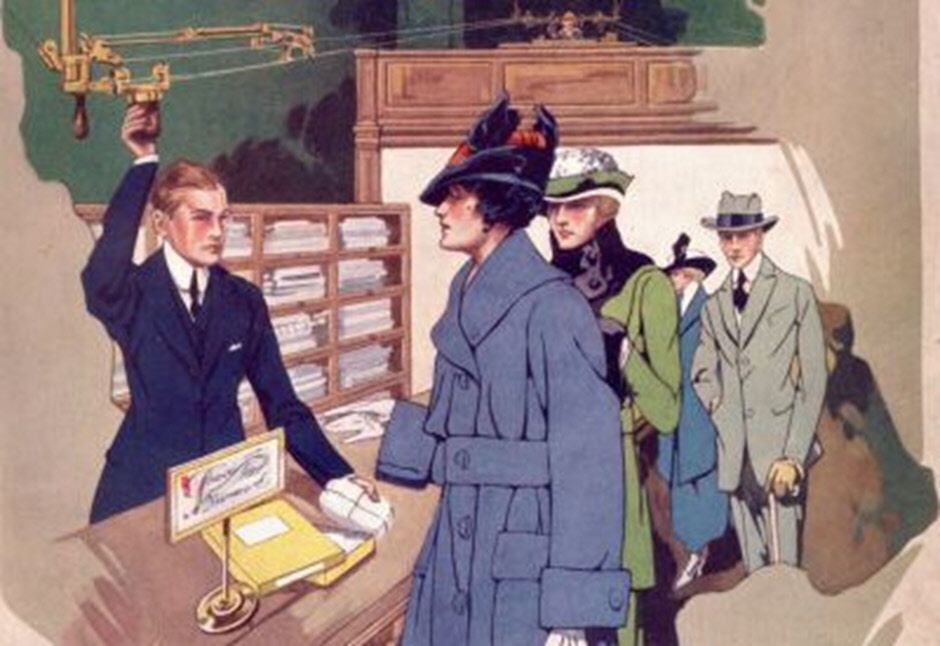Cash Railways

Some stores still use them: a rubber-footed canister that speeds through a maze of tubing via compressed air, delivering receipts and change with a satisfying ‘thonk.’ At one point, most of the major cities of Europe and America even had such pneumatic tube service integrated with the postal system.
But, for communication of objects within stores or businesses, there were other mechanical options, given the generic term of “cash railway.” William Stickney Lamson of Lowell, Massachusetts, patented a ball system in 1881 that protected the ‘cargo’ in a hinged wooden ball that ran along sloping wood and leather rails, propelled by gravity. He formed the Lamson Cash Carrier Company in Boston in 1882 and went on to manufacture a system where the ‘cargo’ was placed in a carriage suspended on pulleys from wires. Lamson called this the “Level Wire System” but others were named “Rapid Wire” or “Air-Line.” His company became The Lamson Consolidated Store Service Company and branched out into Europe. In 1884, Lamson licensed the rights to his devices for the ‘Eastern Hemisphere’ to J. M. Kelly of England. By 1889, the London branch alone had installed 3,725 systems.
Lamson, born in 1845 and a Civil War veteran, opened a “five and dime” called the Rachet Store in Lowell where he first experimented with streamlining the cash transfer process. Company lore has him wadding up money in a handkerchief and tossing it, then encasing it in hollowed-out cricket balls and throwing them. Rolling the balls along elevated tracks was the first successful system (still operating in some British shops). Lamson then licensed the wire and pulley device patented by David Brown of Lebanon, New Jersey. The wire system could be enlarged to accommodate packages.
Three trade cards from the 1880s, issued by Lamson Store Service Co., provide the prices for the “Level Wire System” the “Ball System” and the “Bundle System.” The company would build everything needed, including a desk, or desks that would become the property of the merchant. But the systems themselves were leased.
The Ball System charges were by the number of stations; the minimum was assumed to be 4 and the rent $125 for the first year and $72 the second. Adding another station cost $10 the first year. A system of 25 stations was $450 the first year. Among the 44 businesses listed, of among the “seven hundred prominent business houses in the United States using the Ball System” are Lord & Taylor in New York and Newman & Levinson in San Francisco.
The Level Wire System was charged by numbers of ‘cars’ – the minimum being one car for $25 a year, and 4 cars or over at $10 each per year. 32 merchants are listed and over 150 others claimed – most in New England including the 3 stores of the Massachusetts Boot and Shoe Company.
The “Bundle System” cost $24 per station per year, and 25 lessees of the Parcel Carrier are listed including Sanger Brothers in Dallas and Hamburger & Company in Los Angeles – 75 others are claimed.
Illustrated here is the cover to the 1917 trade catalog, showing the wire system patented in 1892. The salesperson has placed the customer’s money in the wooden cup attached to the trolley on the wire. He would then pull the handle at left to release a catapult spring to launch the trolley on its way.
In the 1960s Diebold purchased the Lamson Corp. – they make ATMs. The English company still exists and makes pneumatic cash carrier systems.
(This article first appeared in Book Source Magazine.)
